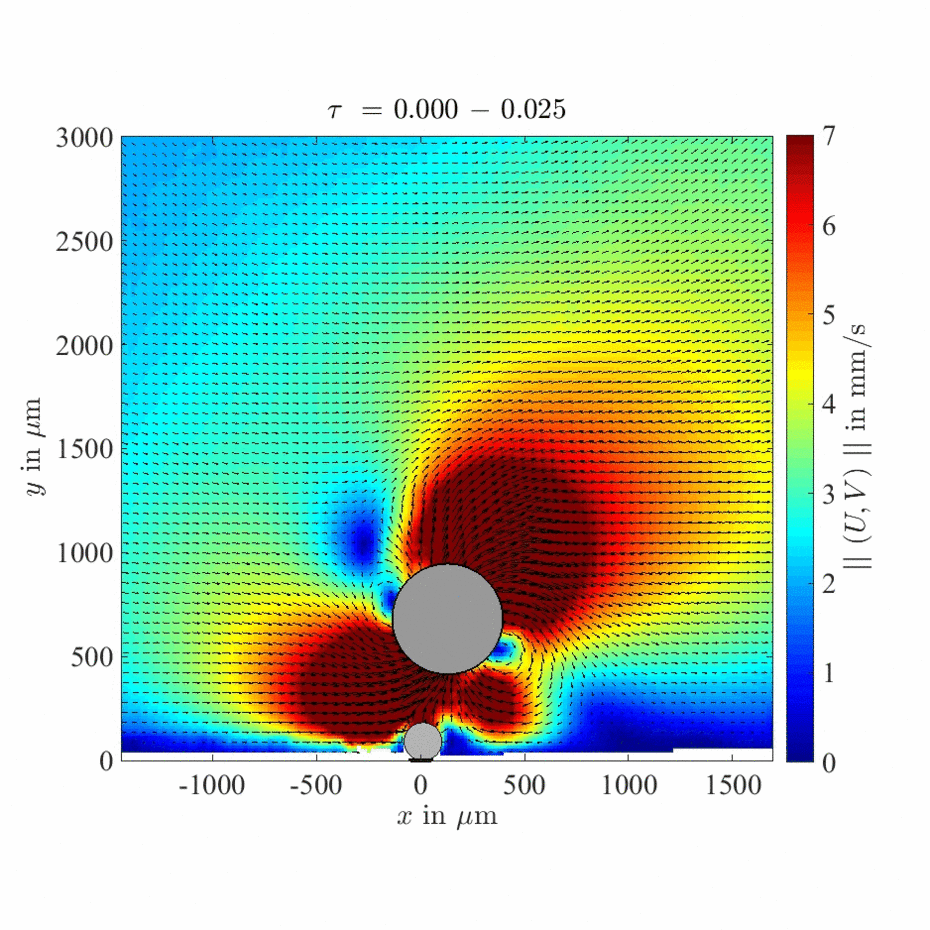MHD shear flow around growing hydrogen bubble

The wake of the detached bubble causes a strong convection of the electrolyte near the newly evolving bubble during its initial growth phase. After the wake flow disappears, the flow around the bubble is governed by the Lorentz forces generated by the magnetic field (MHD effect). The generated shear flow forces the bubble to slowly slide away from the electrode and supports its detachment from the wall.

The bubble is slowly sliding to the right due to the MHD-induced drag force. This blocks the access to the electrode on its right side, causing an asymmetric current field and Lorentz force distribution. The generated shear flow adapts to this asymmetric force distribution. Moreover, a Marangoni flow can be observed at the foot of the bubble due to high local concentration gradients of dissolved hydrogen, which give rise to surface tension gradients. PTV was locally applied to better resolve the high velocity gradients generated by the Marangoni flow.

The MHD flow becomes stronger with an increase of the magnetic induction B. This accelerates the sliding motion and detachment of the bubble. The Marangoni flow near the foot of the bubble is also evident, although the high velocity gradients at the gas-liquid interface could not be properly resolved, despite the local time-resolved PTV approach. A further characterization of these interfacial phenomena will require an even higher magnification.
Contributed by:
Dominik Baczyzmalski (Institute of Fluid Mechanics and Aerodynamics, Universität der Bundeswehr, München, Germany)
